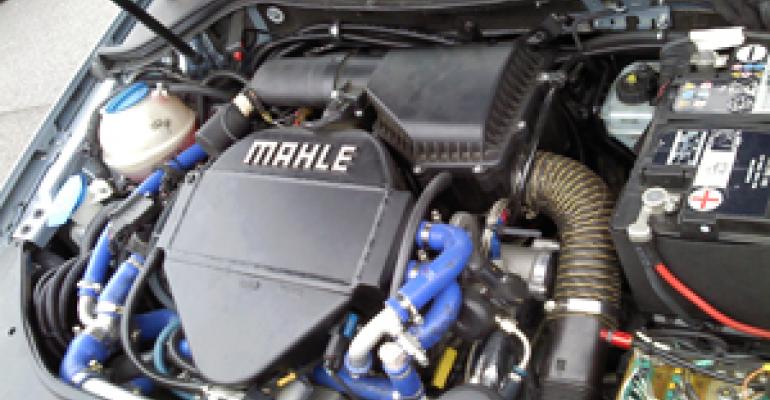
DETROIT – Growing investment in electric-vehicle technology and tightening emissions laws that now ensnare even heavy-duty trucks do not signal the end of the internal-combustion engine, industry experts and a key U.S. regulator agree.
“The future of the internal-combustion engine is bright and clear,” says Byron Bunker, a heavy-duty engines regulator at the U.S. Environmental Protection Agency.
“The future we point to is one of conventional engine technologies,” Bunker tells the annual Directions in Engine Efficiency and Emissions Research conference here Tuesday.
Bunker’s group at the EPA set in motion last month the first-ever fuel-economy and carbon-dioxide emissions regulations for the medium- and heavy-duty truck industry.
The new rules, which span the 2014-2018 timeframe, govern everything from three-quarter-ton pickups such as the Ford F-350 used by local small businesses to the Class 8 big rigs hauling manufactured goods across the country.
Targets were set for specific vehicle and engine categories, calling for upwards of 20% improvements in fuel-use and CO2 emissions reductions.
Those regulations come on the heels of new proposed light-duty fuel-economy rules, calling for auto makers’ fleets to meet 54.5 mpg (4.3 L/100 km) by 2025.
Both sets of regulations carry the common assumption OEMs will achieve the targets using mostly conventional technologies, although the onus is on engineers to devise innovative ways to take the ICE into the future.

Bunker says tomorrow’s ICE must be robust enough to meet wide variations in fuel quality, due growth of alternative sources, and trade “elastic power” for higher peak efficiency when hybrid technology is added.
Solutions also must consider high volumes to make them affordable but still tailored to the vehicle’s particular duty, and sophisticated adaptive-control schemes and new sensor technologies must be uncovered, he says.
The good news is, “every day we have people coming in with radical new ideas,” he says.
Expect the downsizing trend to accelerate, says Hugh Blaxill, general manager at global engineering expert and parts supplier Mahle.
“That’s an obvious trend, but the question is, how low can you go?” says Blaxill, whose company expects 50% of ICE technology in 2030 to shrink to as few as three cylinders.
Using the ICE as a range-extender on an EV would be one promising avenue, he offers.
According to Mahle research, adding a $3,000 ICE to an EV with a battery range of 50 miles (80 km) would extend its operating distance to more than 310 miles (500 km). Adding $3,000 to an EV in the form of a bigger battery and larger electric motor would yield a range improvement of just 18 miles (30 km).
“So electrification on its own is not applicable,” he says.
And Blaxill does not see Americans embracing small EVs meant for commuting around city centers.
“People want something they can take on holiday,” he says, speculating extended-range EVs such as the Chevy Volt will mature much like the Toyota Prius hybrid and become key enablers for OEMs to meet LV fuel-economy targets.
But for extreme downsizing to take place, Blaxill, says, engineers still must iron out combustion issues associated with tiny power plants, as well as the turbocharger’s ability to respond quickly to changes in engine loads.
Ken Wright, chief fuels engineer at integrated oil and gas giant ConcoPhillips, predicts cellulosic ethanol will play a major role in powering tomorrow’s ICEs, despite the technology’s recent retreat from the headlines.
Hydrocarbon fuels in general will continue to have a “viable future,” he adds, cautioning regulators against picking technology “winners and losers.”
He also expects U.S. refiners to meet demand for diesel fuel as the economy expands and auto makers turn more to the compression-ignition technology for light-duty vehicles.
“Given time, the (refining) industry has demonstrated its ability to change over,” he says. “It is capable, with time and money.”




